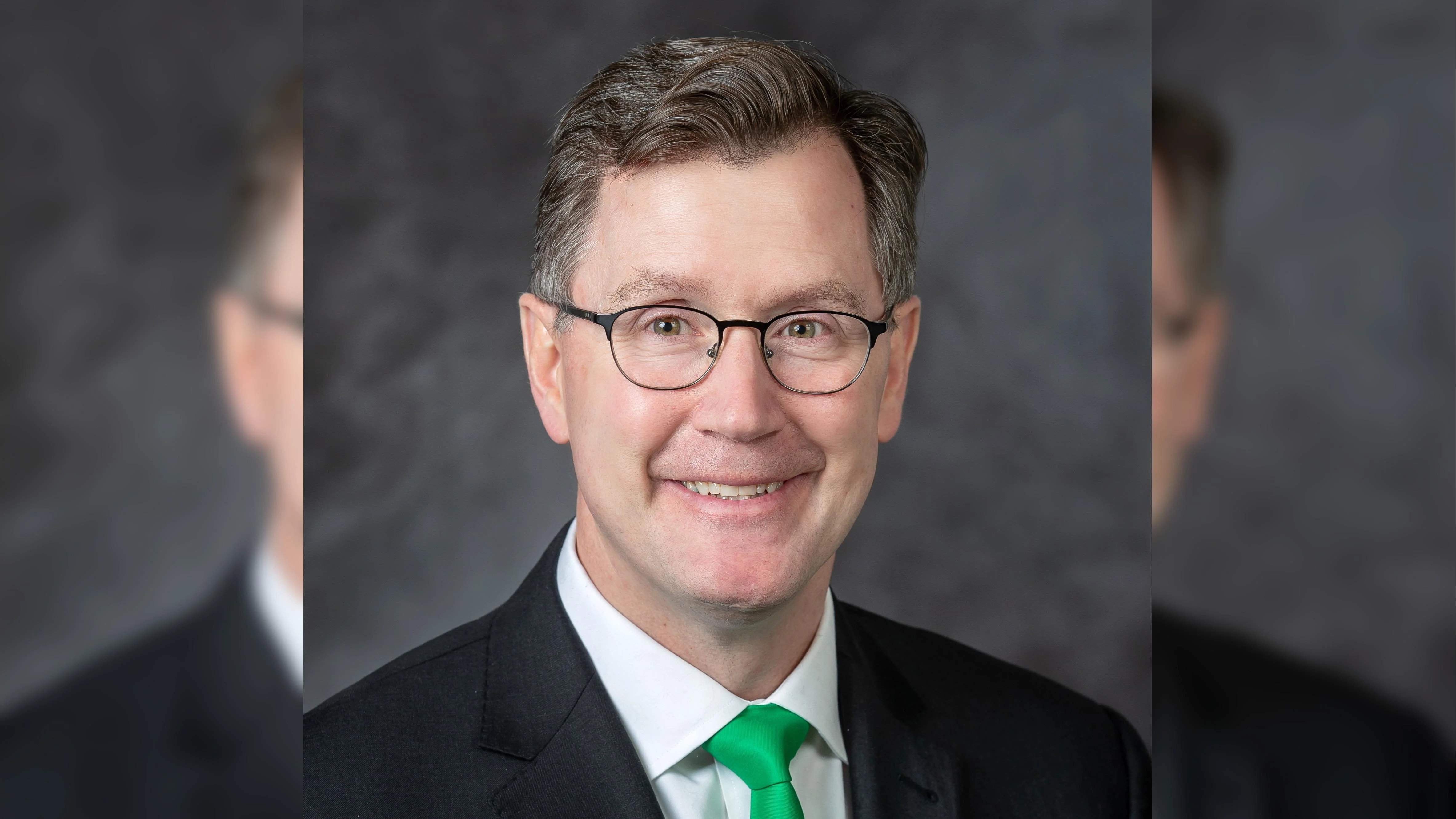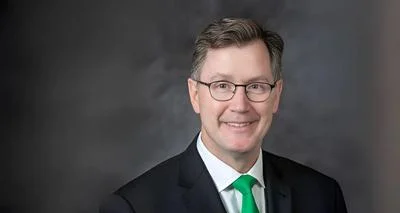Dr. Andrew Armacost, President | University of North Dakota
Dr. Andrew Armacost, President | University of North Dakota
The University of North Dakota (UND) is taking steps to address the state’s physician shortage by increasing the number of North Dakota residents in its medical and physician assistant programs. At a recent meeting of the North Dakota Medical Association, Dr. Marjorie Jenkins, dean of the UND School of Medicine & Health Sciences and vice president for Health Affairs, presented data highlighting that out of more than 1,800 applicants to UND’s M.D. program last year, just over 100 were from North Dakota.
“We saw more than 1,800 total applicants to our M.D. program last year, just over 100 of whom were North Dakota students,” Jenkins said. “The delta between total and North Dakota applications was more than 1,600.”
After screening and interviewing about 10% of all applicants—over 80 from North Dakota—the current M.D. Class of 2029 includes nearly 50 students from within the state out of almost 80 total students.
According to UND’s latest report on health issues in the state, there is already a shortage exceeding 200 physicians in North Dakota.
Jenkins noted similar trends in the physician assistant (P.A.) program: while only seven percent of P.A. applicants last year were from North Dakota, this fall’s cohort consists of more than seventy percent local students.
She attributed part of the challenge to fewer college-bound students from North Dakota pursuing health care education compared to other states. To counter this trend, UND has launched an initiative called ND85 with a goal—encouraged by recent state legislation—to reach eighty-five percent in-state enrollment for both M.D. and P.A. classes.
“The question arose during my first couple of visits to Bismarck, when one of our representatives asked me why we don’t have more North Dakotans in our medical school,” Jenkins explained. She added that she promised legislators her team would work on increasing both applications and admissions for local students.
“I said, ‘We are one of the best-funded public medical schools in the country, and you’re right. We should do better.’”
While many current first-year cohorts have indirect ties to the state through family or upbringing, Jenkins wants even more direct connections among future enrollees because most graduates tend to practice near where they grew up or have family ties.
“The Legislature graciously gave us five years to get this done,” Jenkins said regarding a target date set for 2030 by lawmakers. “We aim to get there faster than that. It’s a huge benefit to be part of a university with record-breaking enrollment — 15,844 students in fall 2025. UND’s recruitment strategies have already greatly benefited ND85.”
To achieve these goals, UND has implemented several strategies: increased visits to high schools across North Dakota; greater involvement in Scrubs Camps and Academies focused on health careers; improved partnerships with local healthcare institutions; expanded outreach through pre-med student organizations; support for programs like Indians Into Medicine (INMED); and stronger engagement with HOSA advisors and events—a group formerly known as Health Occupations Students of America.
Another planned effort is a Primary Care Accelerated Track (PCAT), designed so graduates can enter residency programs sooner: “We’re actively planning a Primary Care Accelerated Track that would place graduates into our state’s family and internal medicine residencies more quickly,” Jenkins said. “There’s a lot of enthusiasm in the Legislature around ‘pathwaying’ students into our rural communities.”
Based on similar models developed elsewhere by Jenkins’ leadership teams—including at her previous institution—this approach would allow some medical students to save time on their training while receiving tuition reimbursement if they commit at least five years practicing in areas facing provider shortages.
These initiatives involve collaboration not only within academic circles but also with alumni networks such as UND's Alumni Association & Foundation (UNDAAF). Peter Johnson, director for Government Relations & Public Affairs at UNDAAF, reported positive feedback after he joined Jenkins visiting nearly two dozen legislators across central and western parts of the state since new legislative measures took effect earlier this year.
“We had 21, 22 legislators we connected with,” Johnson stated about their outreach trip covering cities including Rugby, Minot, Velva, Bismarck and Jamestown. “She’s making a very positive impression.” He emphasized bipartisan support for retaining locally trained healthcare professionals: Policymakers “all understand the value of providing opportunities for our own students — keeping them here and keeping trained physicians in the state.”
Fargo-based Representative Steve Swiontek echoed this sentiment: “We want to support and fund the Medical School to where it should be,” Swiontek said. “And legislators understand that if more individuals who apply...are North Dakotans, the odds are higher that they’ll stay [to practice].” While acknowledging some graduates will inevitably leave after finishing their studies or return later on—Swiontek believes momentum is shifting toward retention: he is “seeing that more and more people want to stay in North Dakota.”
State Senator Tim Mathern offered another perspective—that increased interest from neighboring states due partly to investments like new facilities at UND may enhance overall quality even as proportions shift slightly away from exclusively local enrollment: “Another way of looking at it is: we made an investment...which is positive,” Mathern remarked about attracting regional talent while noting many out-of-state recruits ultimately remain after graduation.
Back at Grand Forks campus headquarters—Jenkins described ND85 as fundamentally grassroots-driven: “It will reach down even into middle schools...to speak to younger students,” she said about using SMHS student ambassadors throughout local communities statewide.
“It’s really going to be very much like most things that happen in North Dakota,” Jenkins concluded.“With everyone coming together to make it happen.”
UND continues efforts beyond these programs through online offerings aimed at supporting workforce needs statewide by helping retain talent locally while attracting new attention nationally via remote learning options available through its digital platforms.
Additionally,new infrastructure projects such as STEM-focused buildings are expected help further expand capacity for preparing future members of key professions vital for addressing ongoing workforce challenges.
Workforce preparation takes place across various settings—from labs,and classrooms,to field experiences—as part of comprehensive educational programming targeting future healthcare professionals.
UND hopes its combined efforts under ND85 will increase homegrown participation among those training to become physicians or physician assistants,and ultimately strengthen access throughout underserved regions.



 Alerts Sign-up
Alerts Sign-up